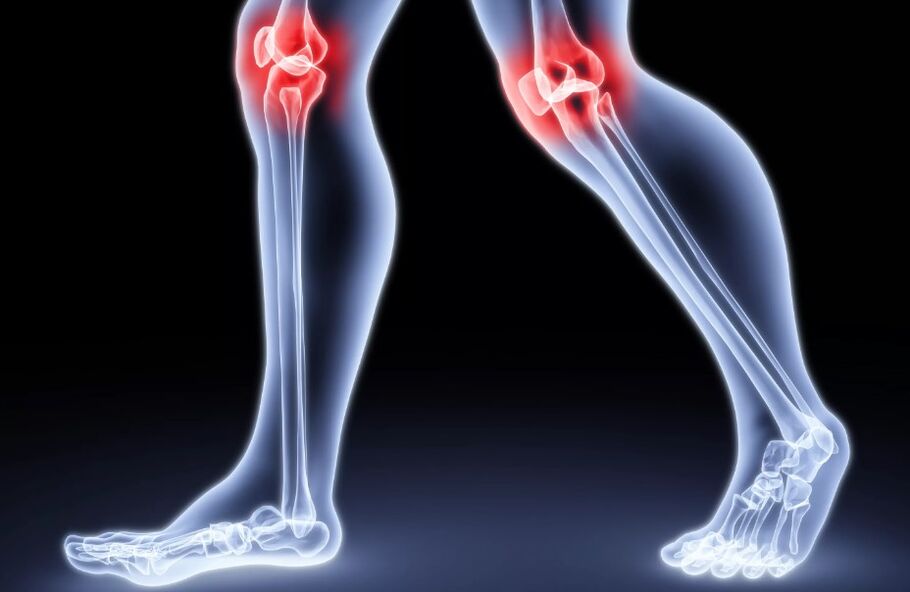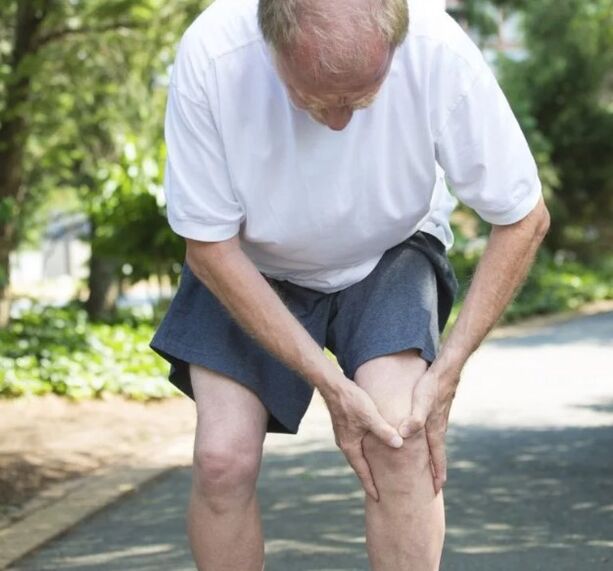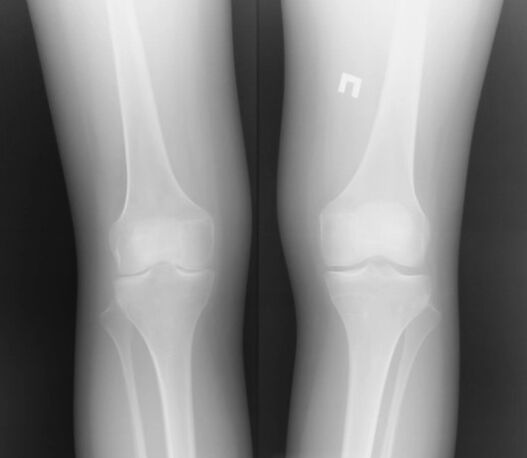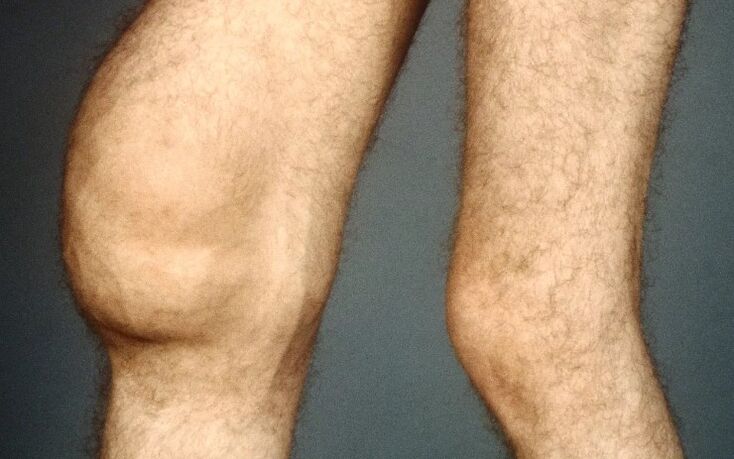Arthrosis is a chronic articulated disease in which the cartilage of the wrist progressively destroys.While the cartilage destroys, changes appear to be the changes that the cartilage covers and in the common capsule and what is the synonyms of Arthrosis?

The expression of Arthros "Arthros" - an "Ozis" - non-Hungarian disease.However, this description is not fully accurate, because there are some inflammatory changes with arthrosis.In countries in English, "Our" arthrosis in the large majority of cases is called arthritis (arthritit), I.E.suffix (ITIS suffix), while we are commonly called arthritis, etc.Sometimes they try to correct this disagreement with another belt: arthroso-arthritis, but it is rare.
In modern scientific articles, the term osteoaarthrosis has been found more often (from Greek words "osteo" - bone, "Arthros" - joint, II, non-Hungarian joints and bones).And again, in the English language countries, "Our" Ostose Arthrosis is called osteoarthritis (Osteoarthitis), I.E.Inflammatory disease of the wrist and bone.
We often hear from patients: "At first I was diagnosed with Arthrosis, and now osteoarthritis is already writing. Is it really so bad?"In fact, arthritis and arthritis are synonyms, and your doctors talked about the same thing.
As we mentioned at the very beginning, with arthrosis, the cartilage is progressively destroyed, and bones gradually involve in the process.With a bone arthrosis, the first happening sclerosis sector (compression), as a result of loss of shock -Aabsorbing properties.Then there are Point along the edges of the bone (exostosis), which often mislead "
butterflies with salt " - actually, with ordinary arthrosis, there is no salt salt.With further disease, the bone begins to bend, deform, cysts form in themselves: often a disease is often called deforming arthrosis.In the old medical books, you can sometimes find the phrase "Configuring Arthrosis, but now almost never be used. (osteoartroza). U starim medicinskim knjigama ponekad možete pronaći frazu "konfiguriranje artroze", ali sada se gotovo nikada ne koristi.

The exact causes of the development of arthrosis are considered unknown for long, so there is another name for this disease - idiopathic arthrosis , I.E.Arthrosis, which appeared for unknown reasons or spontaneously.Of course, now scientists no longer consider arthritis on mystery and the reasons for his development are known.More about the causes of arthrosis, about what is primary and secondary arthrosis below.
Arthrosis more often affects those compounds that experience the maximum load (hip, knee, ankle joint).Hook's Arthrosis is called coxartnost (from the word "Cox" - hip), ankle joint - crurosteoarthritis ("Cruuris" - Lower leg), Kljeno - Gonartost ("Gene" - knee).In most cases, Arthrosis affects the knee joints, while one of the joints can be destroyed more.In this case, the diagnosis sounds like bilateral gonortiness with overcoming damage on the right (or left) knee joint.
Often, not one, but in several joints affects arthrosis, so they use another expression - polioaaaarthrosis that means defeat three or more joints (two symmetrical, and knees, and some others).In this case, the diagnosis usually sounds as follows: polyosteoarthrosis with the prevailing damage to the knee joint (or one).
Why does a joint knee arthrosis appear?
The arthrosis of the knee wrist is different.Depending on the causes of its phenomenon, the primary and secondary arthrosis is doubly.
The primary arthrosis of the knee joint
The cartilage zvostavica is constantly destroyed and updated, and these processes are balanced.With age, the cartilage update slows down and destroy the cartilage, which is called the degradation process or degeneration, begins to overcome.
The process of synthesis and destruction of cartilage is usually balanced.If degeneration begins to overcome, then the knee joint is starting in most cases, the degeneration of the cartilage, that is, the development of arthrosis, occurs after 45-50 years, but sometimes arthritis can be developed in 20 years.Fortunately, the development of arthrosis in such a young age is extremely rare.
People are prone to knee joint arthroses to a greater or lesser extent.As a rule, if an arthrosis appears, and if there are no more than 60 years old, and then it will not be slightly (certain degenerative changes in the elderly).

It is important to make a radiograph for all the older ones, for example for example for example, for example, for example, for example, for example, for example, for example, for example, for example, it will almost 90% be signsArthrosis, but they don't feel everything their knees are as problematic.This is especially true of men who often already "serious" arthrosis does not show themselves or causes minimal inconvenience.
Primary arthrosis appears spontaneously, I.E.Without starting the factor, therefore it is called idiopathic, which we talked about earlier.
So we have already learned that age is one of the main factors that determine the development of arthrosis, because the processes of the cartilage degeneration begin to overcome with age.Each fourth person over 55 years old suffers from the arthrosis of the knee joint.But we also noticed that with age, arthrosis is not developing in everyone.So there are other reasons.Before we list them, we note that there is no main, main reason.The arthrosis of the common knee is developing in terms of the cause, while some play a big role, while others - less.
. The women from the knee joint will suffer women more often.The exact reasons for these are unknown, but you can try to explain the following reasons.On average, the lifespan of women is higher than in men, and accordingly, the average older woman will more express degenerative processes.In addition, body weight in women on average is something more.Bone size in women is less than in men, and together with greater body weight, this leads to greater pressure in the knee joints, and in accordance with these, more intense mechanical destruction of cartilage.In the great majority of cases in women, Arthrosis is beginning to appear after the termination of menstruation, and maybe the lack of estrogen determines the development of arthrosis.Keep in mind that attempts to treat your knee joint arthrosis in women after the menopause by estrogen, of course ,, but so far are not successful.
Weight. Of course, larger body weight, the bigger load must be transferred to our knee joints.In addition, excess weight reduces physical activity and leads to the weakness of the hip muscles.For more active cartilage synthesis, movements are needed (without excess pressure), and with a seated lifestyle, the cartilage cartridges are beginning to overcome.Hip muscles are important knee joint stabilizers, and with the weakness of these muscles, movement in the knee joints becomes more painted, which speeds up the destruction of cartilage.Generally, these processes can be described as a vicious circuit: larger body weight, faster the knee joint is destroyed, the higher the pain, which is harder to move, moving to excess body weight.

The vicious grace of obesity and arthrosis of the knee
on the other hand, only the arthrosis of the knee joint develops only among complete people - those who have no obesity can suffer from arthrosis.Again, that's because an arthrosis has no reason.
Heredity. It has been noticed for a long time that the arthrosis of the knee joint is "Family" disease.If you have arthrosis or parents, unfortunately, the probability of this disease is high with you.Scientists have discovered many genes that are responsible for, for example, the individual characteristics of the main role of cartilage - collagen, but unfortunately, so far these discoveries do not have practical significance, because we cannot affect the prevention or treatment of arthrosis.There is evidence that the inheritance of Arthrosis is transmitted along the women's line, which partly explains their great tendency to this disease.
The primary arthrosis of the knee joint is not only happening for one reason, but only with their total.At the same time, the arthrosis of the knee wrist is in one or second degree in almost all people over 60, but the seriousness of the arthrosis is very different, not always arthrosis that are on radiography.In fact, it is even harder: not any pain in the knee joint in an older person or, in addition, ages 40-60 will be accompanied by changes in radiographic characteristics for arthrosis.
For example, scientists have found that 76% of the elderly with complaints of pain in the radiographs found arthrosis. That is, it doesn't hurt in the knee joint in the older people, it is necessary to arthrose of the knee wrist. At the same time, among all the elderly with the arthrosis of knee joints found on the radiography, only 81% will complain to pain. That is, does not always save an existing arthrosis.
Strictly speaking, there is no obligatory connection of severity of pain from the seriousness of the knee joint arthrosis on the radiograph.This happens that changes on the radiograph is completely insignificant, and it happens in the other way around the radiograph, and the person who can take a bicycle almost every day.

More often, the arms of the knee joint affected by arthrosis from the inside.The blue arrow marked the outer part of the compound, and the orange - interior of the joint.Pay attention to how the gap between the interior bones: cartilage is not visible on the radiograph, and this gap is that means cartilage.In this case, on the inside of the knee joint, there is practically no cartilage, and the bone is already rubbed on the bone.
With gradual abrasion of the cartilage on the inside of the knee joint, the leg begins to bend.Since arthrosis often affects the joints of the knee, that is, both legs begin to curl up, and the forms in shape) appears, in approximately 10% of the form), in this case, the X-shaped deformity begins.
Manje obično (u približno 10% slučajeva), na spoljne dijelove zgloba utječe artroza, a u ovom slučaju počinje deformacija u obliku slova X (Valgus).
Of course, with a curved load on the internal (with o-shaped) or external (with X-shaped), and the arthrosis will develop faster and irrevocable, but also between the Knee (Patel) and the interior of the femur.This option is called Patello-Phomoral Arthrosis, as a rule, because of this
slope, subleasion sample, side hyperpresis syndrome on our website dedicated to a special article Patela, which you can read in a separate article. The secondary arthrosis of the knee joint The knee joint can also be developed due to any specific causes, in this case the arthrosis is called secondary.We will now briefly discuss the options for secondary arthrosis.
Post -traumatic arthrosis knee.
Injuries to common knees, of course, do not add joint health and almost everything, in one way, increase the risk of arthrosis.
One of the most common injuries of the knee joint is a Rupture menisci, which is dedicated to a separate article on our website.Unfortunately, every person with a gap of the meniscus ever had the likelihood that he ever developed arthrosis.If the medial (internal) meniscus is damaged, the arthrosis will rather develop in the interior of the knee joint.And, accordingly, if the external meniscus is cracked, the arthrosis will develop in an external joint joint.Note that the Rupture of the meniscus does not always bring to the arthrosis, the probability of your AULS development.Of course, the more meniscus damaged, the higher the risk of arthrosis.
Jedna od najčešćih ozljeda zgloba koljena su ruptura Menisci, koja je posvećena zasebnom članku na našoj web stranici. Nažalost, svaka osoba s jazom Meniskusa ikad je imala vjerojatnost da je ikad razvijao artrozu. Ako je oštećen medijalni (interni) meniskus, artroza će se radije razviti u unutrašnjosti zgloba koljena. I, u skladu s tim, ako se vanjski meniskus pukne, artroza će se razviti u vanjskom spoju zglobova. Imajte na umu da ruptura meniskusa ne dovodi uvijek do uvijek do artroze, vjerojatnosti svog razvoja AULS-a. Naravno, što je više meniskus oštećen, veći je rizik od artroze.

Another reason for the development of the wrist's joint arthrosis is the rupture of the ligaments, for example, the rupture of the front cross-league.As a result of the rupture of the ligament in the joint, instability can occur, which, of course, lead to the damage to the cartilage and the development of arthrosis.Of course, the cartilage damage depends on the degree of instability, which can be different.
Much heavier knee joint is a tibia or thigh line in the hinged surface, then such a fracture is called intraarticular.Almost any introticular fracture is accompanied by displacing fragments, and thus, the form of articulated surface changes.The step that appears as a result of the shift inevitably leads to progressive destruction of cartilage and the appearance of arthrosis.Of course, harder fracture, the larger intraunticular fragments is, which is more cartilage damaged and the risk of arthrosis is higher.After heavy multi-horse-row fractures, arthrosis develops in almost 100% of cases even in addition to perfectly performed osteosynthesis operation (bone fragments and screws, tiles, etc.)

















































